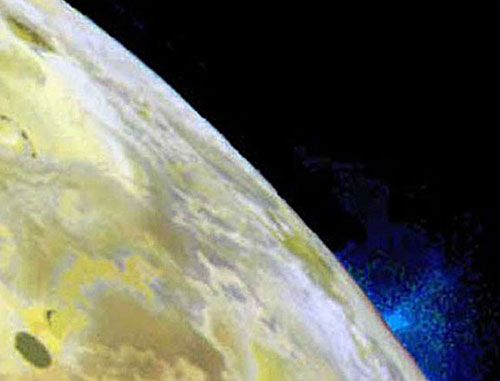|

by David Talbott
from
Thunderbolts Website
July 28, 2004

Credit: The Galileo
Project, JPL, NASA
This photograph, taken by the Galileo space craft, is one of
many images showing plumes of plasma jetting from the
surface of Jupiterís closest moon Io and
reaching up to hundreds of kilometers into space. The first to
suggest that these plumes were electrical discharge
was Cornell University astrophysicist Thomas Gold,
whose article on the "Electric Origin of the Outburst on Io,"
was published in the journal Science, November 30, 1979. In
1987 Goldís interpretation was supported by plasma
physicists Alex Dessler and Anthony Peratt in an
article published in the journal Astrophysics and Space Science.
Dessler and Peratt observed that both the filamentary
penumbra and the convergence of ejecta into well-defined
rings are characteristic plasma discharge effects that have
no counterpart in volcanoes.
Further evidence was returned by the Galileo probe, which
found the source of the plumes to be hotter than any lava
on Earth - a predictable discharge feature in the electric
model. But perhaps the biggest surprise was that the "volcanoes"
had moved tens of kilometers in a few years, another predictable
feature of the electric model.
For the proponents of the "electric
universe", the arcing on Io, in its
electrical connection to Jupiter, is analogous to
the arcing on a comet nucleus as it penetrates deeply into
the electrical field of the Sun. The one produces
streams of plasma and dust that flow from the Jovian domain
into the rest of the solar system, while the other produces the
familiar comet tail.
|